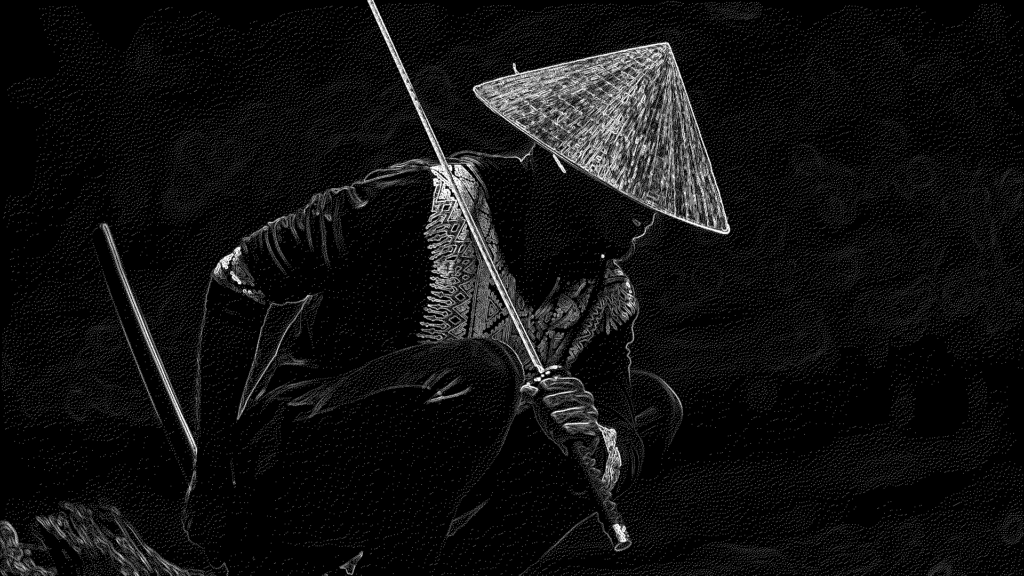
The Discipline Behind Every Detail
Gi (義), or righteousness, is the first pillar of Bushidō, the ancient code of the samurai. In the world of 3D modeling, Gi is more than just ethical conduct it’s the relentless pursuit of technical excellence. It’s the quiet discipline behind every clean topology, every aligned UV island, every shadow that falls exactly as intended
Righteousness in 3D isn’t loud or boastful. It’s found in the precision of a perfect bevel, the integrity of a well-optimized mesh and the care behind texture fidelity. It’s the commitment to do things the right way, even when no one’s watching. A model can look great from a distance but Gi ensures it holds up under scrutiny.
An artist who lives by Gi (義) doesn’t chase shortcuts. They chase mastery.An artist who lives by Gi doesn’t chase shortcuts. They chase mastery.
Beveling and Edge Definition: The Precision of Righteousness
In hard-surface modeling, proper beveling is not a stylistic choice, it's a fundamental principle. Perfectly sharp edges are a fantasy; even the sharpest blades have microscopic curvature. In 3D, razor-thin edges break light flow, creating harsh, unrealistic shading artifacts.
Strategic beveling is how we respect both the material and the viewer. It allows metal to reflect light correctly, gives plastics their subtle softness, and helps every edge feel believable under any lighting condition.
Whether you're modeling a sci-fi panel or a six-blade shuriken, the edges tell the story. A slightly beveled corner catches light in just the right way, creating the illusion of weight and material depth. Even the smallest bevels bring structure and polish.
Righteousness lives in these subtle choices, the ones that separate a quick model from a professional one.
UV Mapping & Texturing: The Accuracy of Righteousness
UV mapping is the unsung hero of every beautiful render. It’s the technical process of projecting 2D textures onto 3D geometry, an invisible foundation that either supports or sabotages your entire texturing workflow.
Artists who embrace Gi (義) know that a clean UV layout is non-negotiable. No stretching, no overlapping, no chaos. It’s about respect for the texture, the shader, and the viewer. When unwrapping, righteousness means thinking ahead: minimizing seams, maximizing texel density, and organizing your islands like an engineer designs a circuit board.
Once the UVs are in place, textures become your language. Physically Based Rendering (PBR) materials like reflectivity, metalness, and roughness only shine when the underlying mapping is solid. With proper UVs and thoughtfully crafted maps, you can make a rusty anvil look like it’s seen decades of forge work. Every scratch becomes a chapter, every patch of wear a reminder of use.
That’s the mark of righteousness: storytelling through precision.
Rendering and Lighting: The Illumination of Righteousness
A great model can still fall flat without proper rendering and lighting. Righteousness extends beyond the mesh it reaches into the final image, where all your choices culminate.
Rendering is the act of turning 3D data into a 2D image. Lighting is how we sculpt that image. And together, they reveal the truth of your work. A well-lit scene doesn’t just make things visible; it conveys material, mood, and quality.
Artists who honor Gi (義) study global illumination, soft shadows, bounce light, and reflections. They don’t just throw in an HDRI and hope for the best. They craft lighting setups that highlight the form, reveal details, and create a sense of realism.
Righteousness is caring enough to get the lighting just right.
Discipline and Repetition: The Practice of Righteousness
Behind every clean model is hours of repetition. Gi (義) isn’t always exciting, it's built through small, consistent acts of effort. Retopologizing mesh that no one else would notice. Redoing a UV unwrap because the layout wasn’t optimal. Fixing an edge loop because it disrupted flow.
This kind of dedication might feel slow. It might go unrecognized. But it builds something stronger than a portfolio; it builds character.
Artists guided by righteousness don’t aim for “good enough.” They aim for clean, organized, and functional. The kind of work that another artist can open and immediately understand.
It’s not about perfection. It’s about intention.
Continuous Learning: Walking the Path of Righteousness
Righteousness isn’t static, it's a path. And every step on that path is fueled by curiosity, humility, and the desire to improve. New workflows, emerging software, evolving industry standards, an artist who follows Gi (義) doesn’t resist change, they seek it out. They dive into topology studies. They compare UV layouts. They open new tools not just to finish projects faster, but to understand their craft more deeply.
Whether you're studying CAD-based modeling using software like Plasticity or refining your PBR texturing pipeline, righteousness means you’re never done learning.
The moment you stop growing, you stop being righteous.
Craft with Integrity
Gi (義) is more than a principle it’s a way of working. It’s the reason why some 3D models feel right, even if you don’t know why. They’re not just beautiful; they’re thoughtfully constructed, technically sound, and deeply intentional.
In the end, righteousness in 3D isn’t about how your model looks, it's about how it’s made.
So ask yourself:
Are you modeling with integrity? Or are you chasing the fastest route to a finished image?
Mastery begins with discipline. Righteousness is the foundation.
Stay sharp for the next article on Yu (勇) – Courage; the virtue that fuels creative evolution through experimentation, discomfort, and risk.
